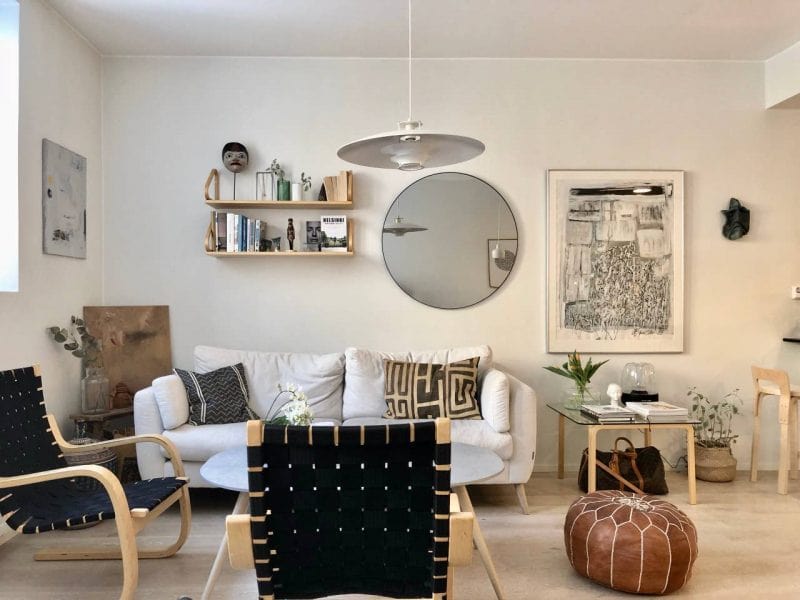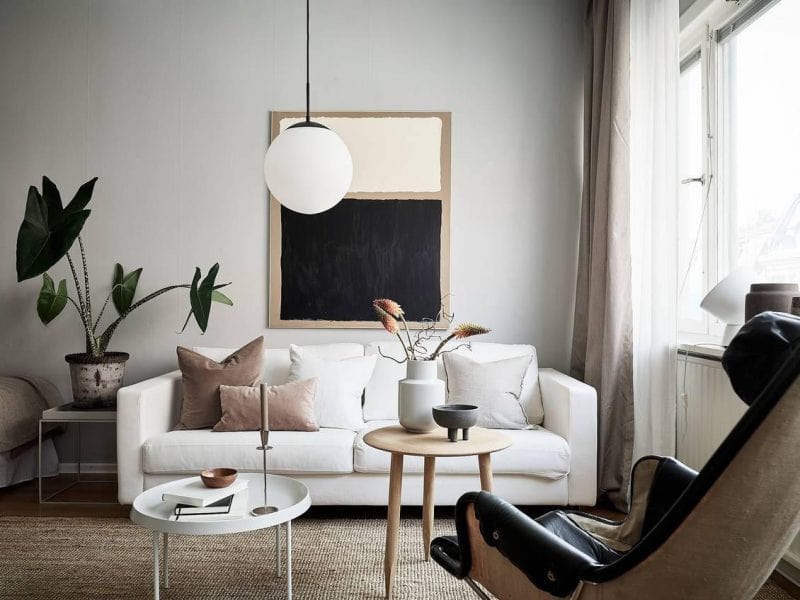The history of Scandinavian design has its roots in the romantic and revolutionary for its time artistic direction – “art nouveau”. It is the art Nouveau, a style that promotes applied art in combination with the natural beauty of natural lines, at the end of the XIX century led away the creativity of its predecessors from the right lines and sharp corners.
The new artistic direction was distinguished by an unusual at that time combination of high aesthetics and utilitarian functions in the created works. It was the symbiosis of decorative and functional qualities that became fundamental in the art of the interwar period.
At this time in the countries of the Scandinavian peninsula the concept of “beautiful and accessible things” is born popular among the population. This ideology appeared within the walls of the Swedish Society of Industrial Design, whose main goal was not just to popularize the design, but to make it accessible to the majority of the inhabitants of the region.
For the first time, the advantages of the new decorative-applied art were shown at the Stockholm Exhibition in 1930. The national policy of some Nordic countries, namely Sweden, Norway and Denmark, was aimed at the development of subject design, which is characterized by an aesthetically balanced combination of functionality of the object and its appearance.
The very concept of “Scandinavian design” was born after the exhibition of the same name, which drove around the U.S. and Canada from 1954 to 1957. It was this exposition, promoting the “Scandinavian Dream”, that became the point of departure of northern poetics in the world of international design.

Until now, the restraint of the Scandinavian style inspires designers with its simplicity and functionality. Despite the fact that laconic forms and light, often pastel colors are rather forced interior trends in the Nordic countries, associated with the lack of light, they are gaining popularity in the rest of the world. As it has already been said, northern aesthetics is, first of all, simplicity and functionality.
Scandinavian design respects space and is faithful to applied art. Local explosions of creativity are observed mainly among the works of illustrators and graphic designers, but in interior fashion are still the same monochrome colors, pleasant to the touch texture and love of nature.
As for fashion trends in home accessories and dishes, we can talk about a wide interest in metal and handmade ceramics. Designers update floral and typographical prints, light pastel colors.
According to the Scandinavians, candles occupy an important place in the house, as almost every company specializing in interior design tries to remind. Furniture deserves special attention. In the materials designers traditionally prefer almost untreated species of wood – birch, spruce and pine.
Textile tendencies balance between classical Nordic restraint and bold ideas of graphic designers. Various geometric patterns, psychedelic prints and original inscriptions are often applied to light, almost white fabrics.
We can’t help but rejoice that almost everyone of us can create a Scandinavian-style interior: it’s enough to have a sense of harmony and know a few rules. The first thing that should be done is to get rid of unnecessary junk, which overloads such a necessary space. We throw away, give away, give away, sell everything we haven’t used in over a year. You have a lot of such things, don’t you?
When the apartment is slightly unloaded, thus letting the light and air into the house, we choose the color scheme. The most relevant are the delicate pastel shades of pink, cyan, beige, yellow and green combined with the prevailing white color in the interior. Dilute the laconic palette with bright accessories: thin woven plaids, small rugs, decorative pillows.
Lighting plays an important role in Scandinavian interior. You can choose the light sources according to your personal taste: they can be sconces, floor lamps or bright table lamps. Bring any room to life with the help of large indoor plants, which can also be used to zonate the space.
Now let’s move on to the most interesting and important moment – the choice of furniture. It is necessary to remember that sofas and beds should have a laconic silhouette and be as convenient and functional as possible.
The rest of the upholstered furniture is also characterized by rectangular or slightly rounded outlines in combination with upholstery made of natural fabrics, leather, suede, often monochrome or with a modest pattern.

